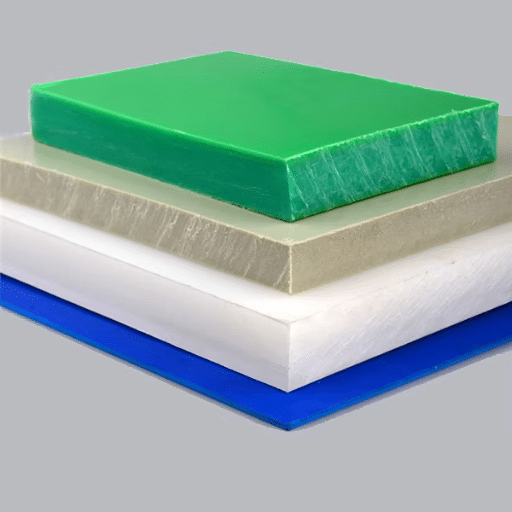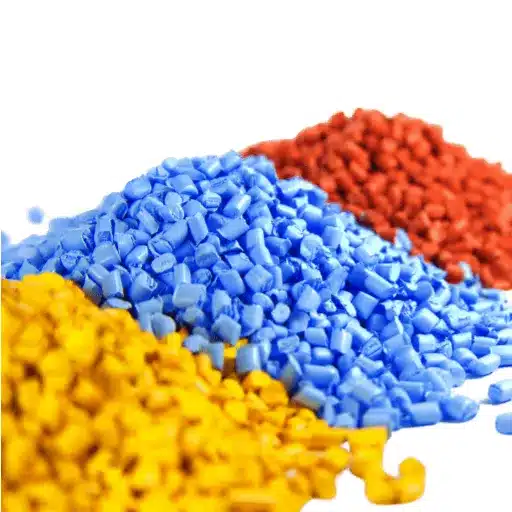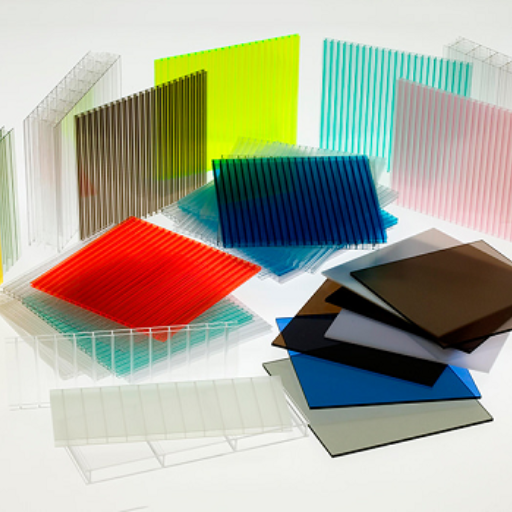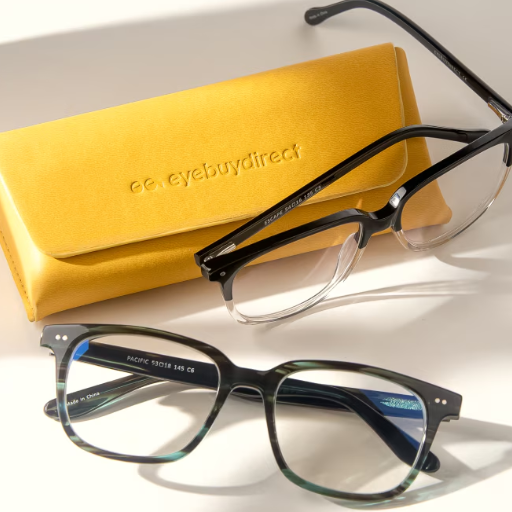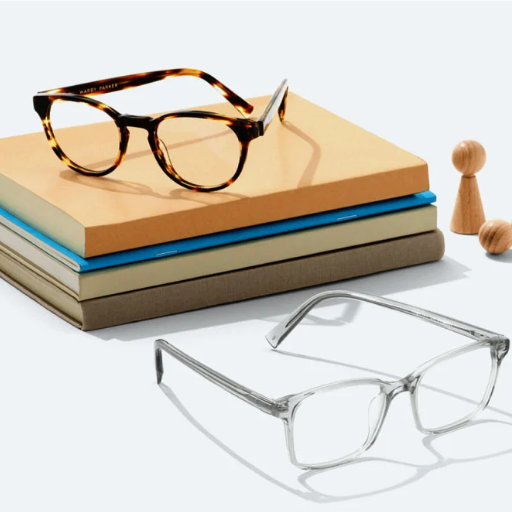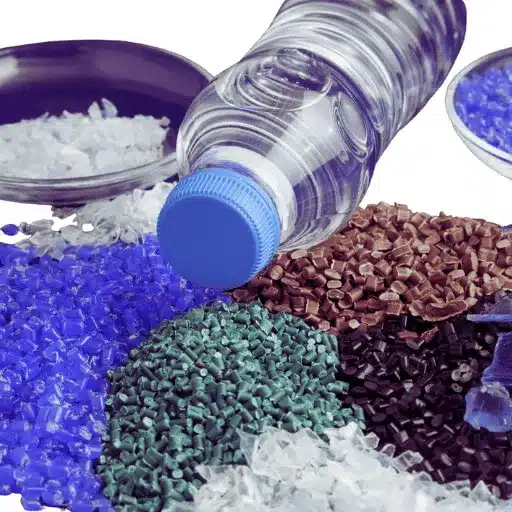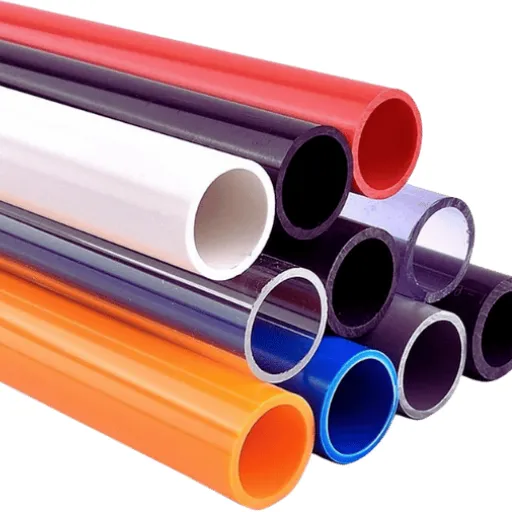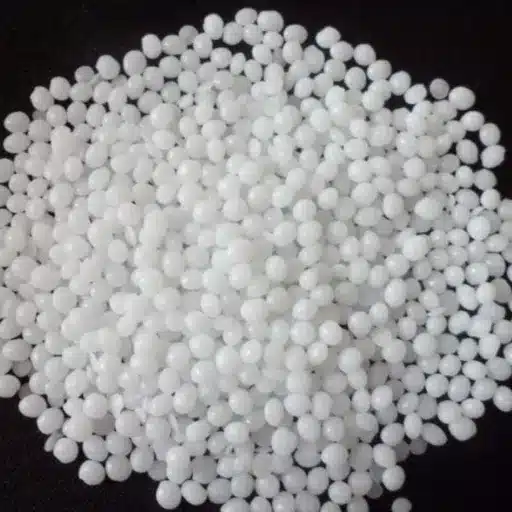Choosing the proper lens material for your glasses is a life-changing decision, affecting the comfort of your glasses, durability, and the ease with which you can focus with the lenses. Ever since technology increased its generation, many materials are on offer; however, the pantheon of lens materials includes plastic and polycarbonate. Both have the basic function of vision improvement, but differences in their properties allow them to meet varying needs and lifestyles. This article discusses the major differences between plastic and polycarbonate lenses with an idea toward a choice based on durability, weight, cost, and optical performance. If your choice heavily factors in price, impact resistance, or optical performance, it is pertinent to know these lens types from the inside out.
Introduction to Lens Materials
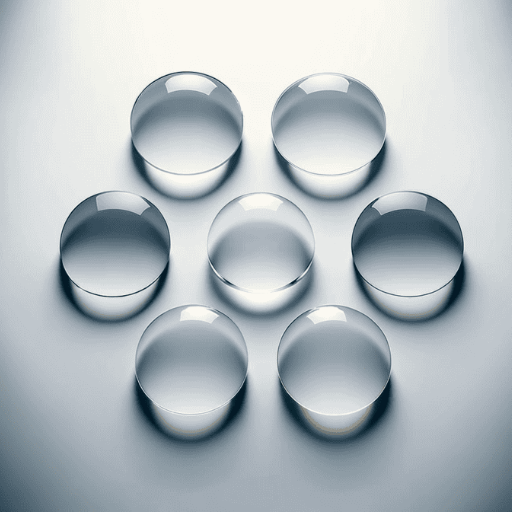
Plastic lenses have the edge of being lightweight and affordable, so they are an everyday option for eyeglasses. They provide decent optical clarity and resist scratches to a certain degree when a proper coating is applied. Yet, the lenses are less resistant to impacts, which might be a deterrent when it comes to risk-oriented domains or sports.
Polycarbonate lenses provide the best protection against impact and last well in the hands of heavy use. They are kids’ best choice, also athletes, plus people who require safety glasses by force of their circumstances. The lenses will be very light and bear in themselves a UV protection quality. Therefore, they limit the departure of harmful rays to a level that would require a coating to further enhance a normal safety requirement. On the other hand, if not for scratch-resistant coating, one would not rank them very highly in resisting scratches because this faintly diminishes the optical clarity when compared to CR-39 lenses.
What is a Lens?
The lens is a curved transparent optical element that refracts light rays in a controlled manner so as to change their direction and, simultaneously, focus the rays or disperse them. Lenses are usually made from materials such as glass or plastics like polycarbonate, each having distinct optical and physical properties. Lenses find their usage in so many applications, including spectacles, microscopes, cameras, and telescopes, for which proper control of light refraction is required. Depending on their curvature and design, each lens will have an optical power and focal length, either convex (converging) or concave (diverging), to produce an actual visual effect or correction. Furthermore, the very process used in polishing the lenses themselves has been modified in recent times by the application of special coatings to improve their resistance to mechanical damage, reduce glare, and filter out certain wavelengths to optimize performance for many technological or scientific purposes.
Importance of Choosing the Right Lenses
Choosing proper lenses is critical in ensuring the required optical performance in science, medicine, and daily life. To clarify, corrective lenses must be available in precisely the correct prescription in order to provide actual visual acuity and in some way prevent issues such as astigmatism or presbyopia. Similarly, microscope and camera lenses must be manufactured to exact specifications of focal length, pupil size, and material to produce the greatest image clarity with the least amount of chromatic distortion of those possibilities. In recent years, new lenses have incorporated comfort features such as anti-reflective coatings, UV blocking, and adaptive polarization to morph into the best working condition for the human eye. Thus, the key considerations of lens quality, purpose, and environmental conditions must be assessed to ensure usefulness and longevity in the technology. Through this, a user, be it a manufacturer or an end user, can make decisions based on basic positional parameters that satisfy functional requirements and meet modern technology advances.
What are Plastic Lenses?
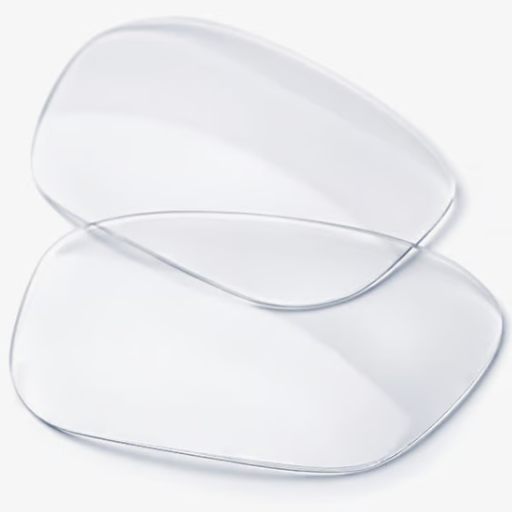
Plastic lenses are lighter optical lenses, most commonly constructed from polycarbonate or CR-39. They are sturdy yet affordable and impact resistant, making them a much sought-after option for prescription eyewear as well as sunglasses. Established as lenses superior in shattering tendencies and those that offer comfort for daily wear, plastic lenses can also be provided with coating treatments to enhance scratch resistance and reduce glare and UV rays, thereby improving their overall functionality and service life.
Types of Plastic Lenses
- Polycarbonate Lenses
Polycarbonate lenses are high-performance lenses with wider applications that attest to their unbelievable impact resistance and lightness. Originally made concrete for aerospace applications, these lenses would now enjoy widespread application in safety eyewear, sports eyewear, and children’s eyewear. Their inherent nature provides UV protection and withstands almost unfriendly situations, thus ensuring their utility in active lifestyles. However, they would better be treated with an anti-scratch coating to maintain the lenses.’
- Trivex Lenses
Trivex lenses are the newest material developed to strive to obtain perfect optical clarity and impact resistance. These are lenses similar to polycarbonate but provide superior visual performance with less distortion. Trivex comes in handy in situations where prescription glasses must provide very precise vision correction. Furthermore, these lenses are extremely light and have natural UV protection, increasing their long-term applications.
- High-Index Lenses
Highly refracting plastics provide a thin and light solution for those with strong prescriptions. They refract light more effectively than an ordinary plastic lens, thus allowing it to be far thinner and less bulky. Thin high-index lenses are mainly used to reduce distortion and allow for a sleek and comfortable form for high prescriptions, though their price can be steep.
- CR-39 Lenses
Advantages of Plastic Lenses
- Lightweight Design
Plastic lenses such as CR-39 provide excellent lightness when compared to traditional glass lenses, and it is one thing that greatly adds to the comfort while wearing these lenses for an extended period. Due to their lightness, they reduce undue strain on the nasal bridge and provide superior usability.
- Affordability
Compared to several other materials for lenses, such as polycarbonate or high-index varieties, plastic lenses are a more reasonable and economical choice. CR-39 lenses, in particular, are cheap and provide excellent optical clarity, making them perfect for the financially conscious buyer.
- Superior Optical Clarity
Plastic lenses are quite good in optical clarity and minor distortion. CR-39 lenses have an Abbe value of about 58, which is somewhat higher than many alternatives such as polycarbonate (that does not exceed 30), thus offering clear vision to the wearer.
- Customizability with Coatings
Many coatings can be applied to plastic lenses to improve their performance and durability. Anti-reflective, scratch-resistant, and UV-protective coatings can be applied to make the plastic lenses more functional and last longer.
- Versatility in Designs and Prescriptions
Common Applications of Plastic Lenses
- Prescription Eyewear
Plastic lenses are the most frequently used material for grinding single-vision, bifocal, or progressive lenses. Studies have also shown that approximately 80% of prescription eyeglasses are ground with plastic lenses because of their weight advantage and ease of customization for various prescriptions.
- Protective Eyewear
Plastic lenses are lightweight and durable, making them also suitable for use in safety goggles and face shields. Particularly, polycarbonate lenses are applied as impact resistance is required-construction sites, laboratories, and sports are just a few instances. Test results on impact resistance show that polycarbonate lenses are up to 10 times more resistant to cracking compared to conventional glass lenses.
- Sunglasses
Plastic lenses boast their ability to hold advanced coatings and tints, hence dominating the sunglass market. Common features added to the lenses are polarization and UV protection, the former improves vision under glare while the latter protects from harmful ultraviolet rays. It is estimated that more than 70% of the world’s sunglasses are made from plastic lenses.
- Sports Eyewear
Plastic lenses serve purposes for athletes under high-impact resistance and lightweight properties. They are designed to withstand tough activities and may come with anti-fog coatings that boost the lenses’ endurance and overall performance in sports like cycling, skiing, and racquetball.
- Children’s Glasses
Considering safety and weight for kids’ eyewear, plastic lenses, notably polycarbonate and Trivex lenses, seem the better option. The lenses’ shatter-resistant nature ensures a minimum possibility of harm from accidental dropping or impact.
What are Polycarbonate Lenses?

Polycarbonate lenses are lightweight, highly impact-resistant lenses, hence widely accepted as the most durable and secure types of lenses. Being thermoplastic, it has high breakage resistance and is well-suited for children, sports, and industrial safety glasses. These also confer an in-built UV protection that helps to save the eyes from harmful UV rays. Furthermore, these thin and light lenses feel quite comfortable when worn, even for long durations.
Understanding Polycarbonate Lens Properties
- Impact Resistance
Polycarbonate lenses can withstand impacts 10 times more than any standard plastic or glass lens would. This is high durability, and it practically supports the making of safety eyewear, sports goggles, and all kinds of environments that critically support eye protection.
- Lightweight Design
The lenses are approximately 30% lighter than the conventional plastic lenses, thus offering great comfort for a long period of wear.
- UV Protection
Polycarbonate lenses naturally block all UVA and UVB rays. The blocking is done by means of the lens itself and is not an additional coating, thus ensuring constant coverage.
- Optical Clarity
In thinness, polycarbonate lenses excel far above any other lenses in optical clarity, while the distortion levels are verbalized as negligible, obviating the need to oppose their use in precise vision.
- Scratch Resistance
Polycarbonate lenses soft as they are compared to glass are coated with a special scratch-resistant material of excellent quality nowadays to extend the polycarbonate’s life and maintain clarity and further quality of vision.
- Thermal Stability
The lenses maintain structural integrity within a broad temperature range and are hence to be trusted in varying environmental conditions.
Benefits of Polycarbonate Lenses
- Impact Resistance
Polycarbonate lenses offer up to 10 times the impact resistance of ordinary plastic or glass lenses. Their superb resistance to impacts makes them an excellent choice for safety eyeglasses, sports goggles, and any environment where eye protection takes precedence.
- Lightweight Design
With density levels near 1.22 g/cm³, polycarbonate lenses weigh far less than conventional glass lenses. These delightful magnesium ions confer an additional value of comfort that prevents muscle fatigue during long use.
- UV Protection
Being inherently polycarbonate lenses happen to block 100% of deadly UVA/UVB rays without any additional layers of coating. Therefore, this feature furnishes the best protection against eye damage that may result from ultraviolet rays over a long duration, including cataract or photokeratitis.
- Optical Clarity and Thinness
Lenses, even with higher prescription strengths, can offer remarkable clarity and stay thin when manufactured by polycarbonate; this is a plus for aesthetics and bulk.
- Shatterproof Properties
Being manufactured from high-strength polycarbonate material, these are practically anti-shatter. This feature of the lenses make them not only the safest option on accidental drop or impact but also the preferred choice for kids’ eyewear.
Common Uses for Polycarbonate Lenses
- Eyewear for Children
Polycarbonate lenses will continue to be used mostly in children’s combinations due to their anti-shatter properties and lightweight. Rough estimates suggest that 85% of eyeglasses for kids incorporate impact-resistant lenses that provide durability and safety for active lifestyles.
- Safety Glasses and Goggles
Polycarbonate lenses appear very crucial to industrial and laboratory safety glasses because they can resist a gross, forceful impact. According to ANSI Z87.1 specifications on optical clarity and impact resistance, polycarbonate is often used with OSHA-compliant safety eyewear.
- Sports Eyewear
Athletes choose polycarbonate lenses for their sports spectacles mainly because they protect from UV rays while enduring rough physical activities. Studies show that sports eyewear with polycarbonate lenses lowers the chance of eye injury by 90% during high-contact sports.
- Sunglasses
Polycarbonate lenses, with their good UV filtration and top-notch optical clarity, could be a substitute for premium sunglasses. Their scratch resistance also makes them ideal for outdoor activity, ensuring that the user has comfortable specs to wear for long durations.
- Prescription Lenses for Active Adults
For adults requiring prescription eyewear, polycarbonate lenses are often selected and preferred, especially for active lifestyles and outdoor activities. They can resist damage from accidental mishaps, making them perfect candidates for use in numerous unrealistic environments.
Comparing Plastic Lenses and Polycarbonate Lenses

- Durability
Polycarbonate lenses offer substantially more impact resistance than the standard plastic lenses and are apt for someone actively engaged in sports or outdoor activities or a child prone to accidental drops.
- Weight
Polycarbonate lenses are lighter than the conventional plastic ones, thus giving more support and comfort when worn for longer times, especially in large or thick prescriptions.
- UV Protection
Unlike most standard plastic lenses which usually require an additional coating for the purpose, polycarbonate lenses naturally block 100% of the harmful UV rays.
- Scratch Resistance
Polycarbonate lenses can be fitted with scratch-resistant coatings, which makes them more resistant to scratch damage than their plastic counterparts. This further enhances the durability of the lens in tough conditions.
- Cost
Compare the Differences: Plastic vs Polycarbonate Lenses
|
Key Point |
Plastic Lenses |
Polycarbonate Lenses |
|---|---|---|
|
Material Composition |
Hard, thermoplastic polymers |
Durable, impact-resistant polycarbonate |
|
Weight |
Generally heavier |
Lightweight, ideal for prolonged use |
|
Impact Resistance |
Moderate resistance |
High resistance, suitable for safety wear |
|
Scratch Resistance |
Requires coatings |
Naturally more scratch-resistant |
|
Optical Clarity |
Higher clarity with basic options |
Slightly less clear, especially uncoated |
|
UV Protection |
Requires additional coatings |
Built-in 100% UV protection |
|
Durability |
Less durable under stress |
Highly durable in extreme conditions |
|
Cost |
More budget-friendly |
Higher cost, premium features included |
|
Thickness |
Thicker for strength and stability |
Thinner, works well in high prescriptions |
|
Application |
Standard eyewear |
Outdoor, sports, and high-impact usage |
Scratch Resistance and Durability
With respect to scratch resistance and durability, these have always been at the forefront of considerations while opting for eyeglass lenses, particularly when long-term performance is contemplated. The more recent lenses nowadays possess advanced coatings aimed at reducing damage to the surface from abrasion caused by normal everyday handling. Polycarbonate or so-called acrylic lenses are inherently harder due to their physical properties, but good impact resistance and physical stress resistance are qualities associated with the best of them. Another application of coatings for lenses of this kind is a hard coating aimed at guarding against scars and scrapes, making them appropriate for physical, sports, and outdoor activities.
Standard plastic lenses, on the other hand, such as those made from CR-39, offer just acceptable durability for normal use but are more scratch-prone and require coating for tougher protection which polycarbonate lenses offer. It has been shown that integrated scratch-resistant coatings vastly extend the lifespan of lenses so that fewer new pairs need to be purchased. Advances in lens manufacturing were partly responsible for increased durability as they allowed for an optimized thickness-to-strength ratio that granted satisfactory performance to very lightweight lenses.
Conclusion: Making the Right Choice
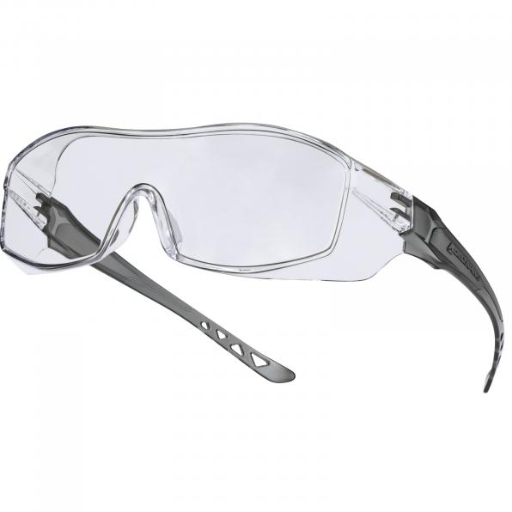
In choosing your smart lenses, base the decision on your priorities, such as durability, weight, and scratch resistance. Aside from being technically resistant to daily processes, superior coatings should be used to enhance their performance and longevity further. Lenses that are both lightweight and strong are practically ideal in balancing comfort and durability. Do not hesitate about the company’s reliability and verified quality standards when deciding.
Factors to Consider When Choosing Lenses
- Lens Material
The type of lens material almost always determines its performance, durability, and weight. It may be polycarbonate, Trivex, glass, or high-index plastics.
-
- Polycarbonate lenses are impact-resistant and very lightweight, which means they can be considered an option for the very active and the youth.
- Trivex lenses has similar impact resistance to polycarbonate but with better optical clarity and weight.
- Glass lenses are the best choice for optical clarity but more hazardous in case of chipping.
- High-index plastic lenses make lenses thinner and lighter, so it is better suited for higher prescriptions.
- Refractive Index
The refractive index determines thinness. Materials with a higher refractive index bend light more efficiently and hence can be made thinner to correct vision. For example, a lens with an index 1.74 is much thinner than one with an index of 1.50, especially for prescriptions beyond ±3.00 diopters.
- Prescription Type
Depending on your prescription, lenses of various types will be suggested. Single-vision lenses are made for myopia or hyperopia, while multifocal, such as bifocal and progressive lenses, are made for presbyopia providing many focal points in one lens.
- Lens Shape and Fit
Lenses should be adequately shaped and fitted according to your frame type and face shape. Ill-fitting lenses cause poor performance with discomfort.
- Photochromic Technology
Polycarbonate lenses are extremely light, an attribute preferred by an active person. Photochromic lenses darken in sunlight and turn clear indoors with the changing light conditions. Hence, these serve as adaptable glasses for those transitioning between setting and environment having different light levels.
Recommendations for Eyeglass Wearers
Investing in advanced lens coatings can significantly enhance the functionality and durability of your glasses. Anti-reflective coatings minimize glare, particularly in scenarios involving digital screens or nighttime driving, while scratch-resistant coatings greatly improve lens longevity. Additionally, UV protection coatings are essential for shielding your eyes from harmful ultraviolet rays, reducing the risk of long-term damage like cataracts.
Upkeep of your glasses, in general, is well-advised for keeping maximum performance and ensuring a lasting life. Clean your glasses with microfiber cleaning cloths that are good at preventing the entry of micro scratches on the lens. Also, keep your glasses in a hard case in case you are not using them. Avoid exposing the lens to high temperatures since this usually results in the fading of specialty coatings or the bending of the frame.
Reference Sources
-
Meta-Analysis of Materials and Treatments Used in Ophthalmic Lenses
This study reviews materials like polycarbonate and plastic used in ophthalmic lenses, focusing on coatings that enhance durability and clarity, particularly for children’s eyewear. -
Study of Injection Molding Process to Improve Geometrical Quality of Thick-Walled Polycarbonate Optical Lenses
This research explores advanced injection molding techniques to improve the quality of thick-walled polycarbonate lenses, reducing defects like sink marks. -
Thermal Mechanism-Driven Microlens Formation in Ge–Sb–S Glasses by Direct Laser Writing
This study investigates microlens formation in glasses using laser writing, providing insights into composition-dependent thermal mechanisms.
Frequently Asked Questions (FAQs)
Q: Understanding Plastic Lenses vs Polycarbonate Lenses
A: When comparing plastic lenses to polycarbonate lenses, it’s essential to understand their differences in durability and optical quality. Plastic lenses, often made from CR-39, are lightweight and can provide adequate clarity for everyday use. However, polycarbonate lenses are known for their superior impact resistance, making them a popular choice for safety glasses and children’s eyewear. Both types of lenses can be treated with coatings for scratch resistance and UV protection, but polycarbonate generally offers better optical clarity in more demanding environments.
Q: What are the Coating Options for Eyeglass Lenses?
A: Coatings can significantly enhance the performance of your eyeglass lenses. Both plastic and polycarbonate lenses can benefit from scratch-resistant coatings, which help maintain clarity over time. Additionally, anti-reflective coatings improve optical quality by reducing glare, making them an excellent choice for individuals who wear glasses for extended periods, such as when using computer glasses. UV protection is another crucial coating that helps shield your eyes from harmful rays.
Q: Are CR-39 Lenses a Good Choice for Prescription Glasses?
A: CR-39 lenses are indeed a good choice for prescription glasses for many individuals. Known for their lightweight and affordable nature, CR-39 lenses provide decent optical clarity for everyday use. However, they may not be as impact-resistant as polycarbonate lenses, which makes them less suitable for active lifestyles or children’s glasses. Suppose you require a pair of glasses for casual activities. In that case, CR-39 lenses might be the best choice, but for those needing safety glasses or more durability, polycarbonate or trivex lenses are recommended.
Q: What Are the Different Types of Lenses Available?
A: There are several types of lenses available on the market, each suited for different visual needs and preferences. Standard plastic lenses and CR-39 lenses are popular for everyday eyewear, while polycarbonate lenses offer enhanced impact resistance and are often recommended for children’s glasses and safety eyewear. Trivex lenses are another lightweight option that combines clarity with durability, making them ideal for high-prescription lenses.
Q: How Does Clarity Compare Between Plastic and Polycarbonate Lenses?
A: Clarity is a crucial factor when choosing between plastic and polycarbonate lenses. Plastic lenses, particularly CR-39, offer good optical clarity for most users. However, polycarbonate lenses are often praised for their superior clarity due to their ability to minimize distortion, making them an excellent choice for individuals requiring precise vision. The quality of the lens, including any coatings applied, also affects clarity.






